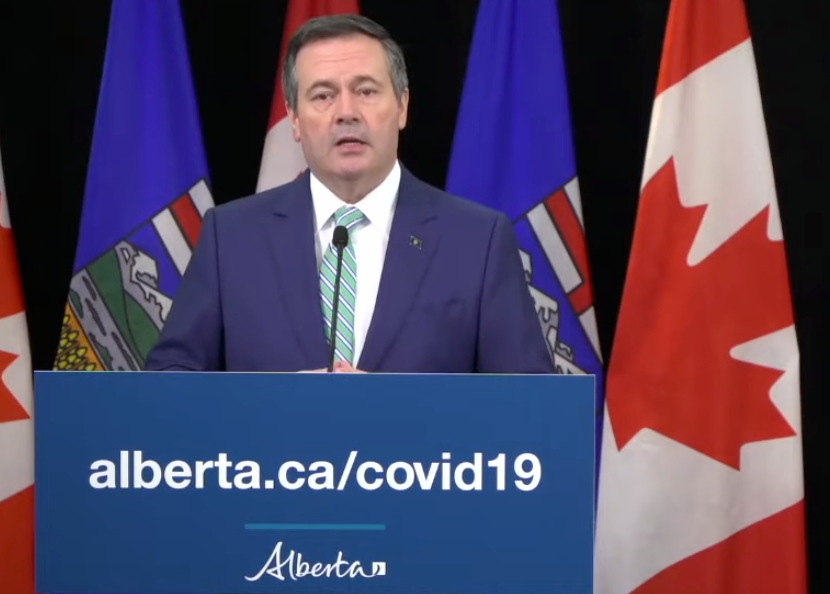ALBERTA – Alberta Premier Jason Kenney has announced he will be unveiling the plan of action to address the COVID-19 pandemic Tuesday (April 7) evening in a televised address.
“I ask people to be prepared for what could be some very challenging numbers as we look at the prospective damage that this virus could still do in our province,” Kenney said. “The key points from our modelling [will give] Albertan’s a sense of where we think we’re headed and how we’re going to cope."
The address will include modelling from Alberta Health Services that provides potential insight into when the peak of the virus will occur in the province and how the health system is preparing for this event. Kenney added that a more detailed set of data, projections and actions will be available Wednesday (April 8).
Alberta’s Chief Medical Officer of Health Dr. Deena Hinshaw reported 98 new cases of the virus Monday (April 6) bringing the total number of diagnosed cases in the province to 1,348. Of those who have tested positive for COVID-19, 204 are suspected to be a result of community transmission.
A total of 24 people have died and 361 people have fully recovered from the virus.
In a newly released map from Alberta Health Services, the Municipal District of Bighorn region which includes Canmore and Exshaw has 13 confirmed positive cases with nine active and four recovered. The Banff region has two positive cases recorded, both active.
Kenney added that Tuesday’s address will give Albertans a sense of when public health measures could be relaxed. He will also speak to the “enormous” economic challenges the province is facing.
“It’s a triple whammy – a public health crisis, the shutdown of much of our economy and then the worst energy prices in our lifetime,” Kenney said, explaining that he hopes to provide a sense of hope and plan for recovery after the pandemic.
“Our knowledge of this virus and how it spreads continues to grow,” Hinshaw said. “In addition to completing as many tests as we can we are also being purposeful in our testing – This means that the groups that are eligible for testing will change as we move through the evolution as the pandemic and as our testing capacity evolves.”
The province has shifted the COVID-19 testing to better understand the potential path of the virus, Hinshaw said.
Testing priority has been expanded to include individuals with COVID-19 symptoms that include cough, runny nose, shortness of breath, fever or sore throat who are first responders, group home or shelter workers, provincial and federal correctional staff and those involved in COVID-19 enforcement.
As of Tuesday morning, any Alberta 65-years or older will have access to testing if they display symptoms of the virus.
This expanded access to testing will aid the province in early detection of infections and prevent further spread of COVID-19 in communities and high-risk populations.
“Who we test should provide us with accurate information about the effects our health measures are having and help us determine if we need to take further steps,” Hinshaw said.
The Canadian Special Advisory Committee has been studying the potential spread of COVID-19 by asymptomatic carriers, Hinshaw said, and it was decided there is a need to expand their approach and incorporate this emerging evidence into public health measures.
“There may be added benefit for those who are well and in places where they cannot keep two metres distance from others to wear a face covering,” Hinshaw said, adding that wearing a mask serves to help protect others from exposure to the virus.
Hinshaw explained that for the average Albertan there is no added benefit to wearing a face covering if they are following the current public health measures in their day-to-day activities – however, if they are in a situation where they cannot maintain physical distancing it can serve to provide added protection.
Hinshaw said the most important steps to take in preventing the spread of COVID-19 remain good hygiene practises, following all public health orders, practising physical distancing and staying home as much as possible.
“These practices will become even more critical in the following weeks… This is the time when community cases may start to rise,” Hinshaw said.
“We must do everything we can to prevent the spread of this virus from person to person in the community.”








